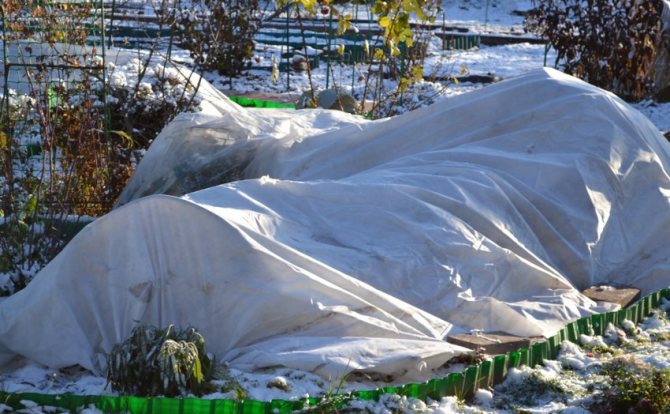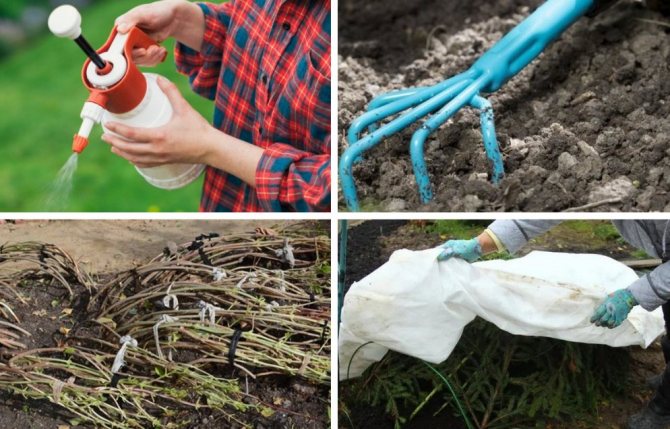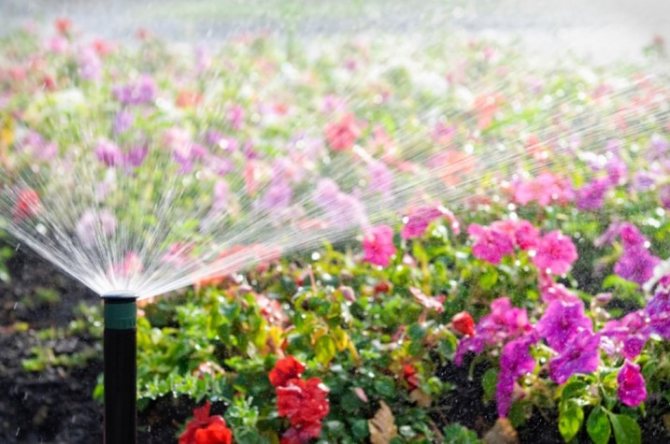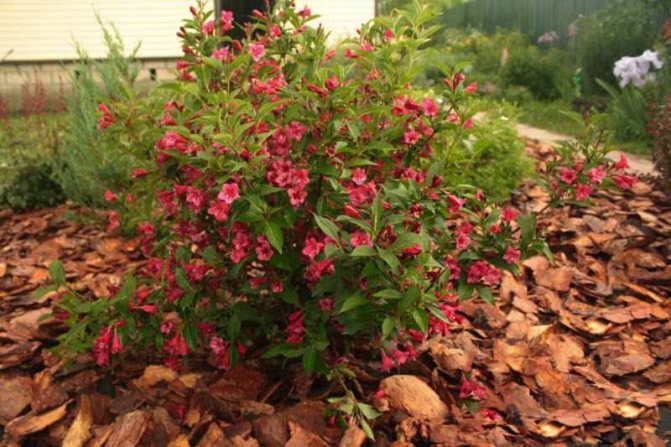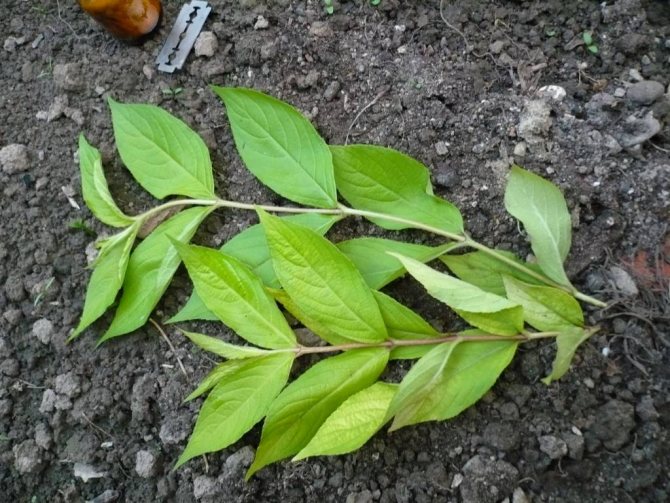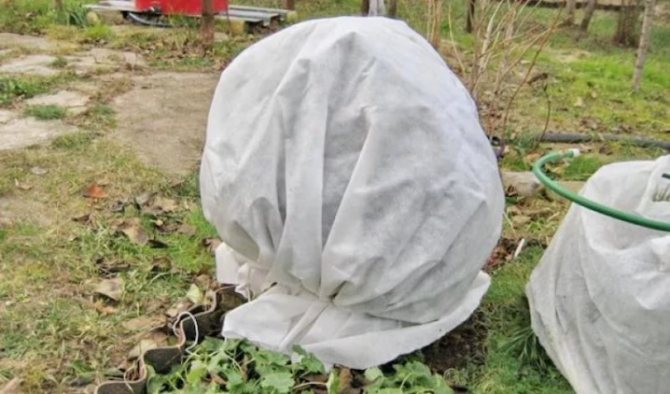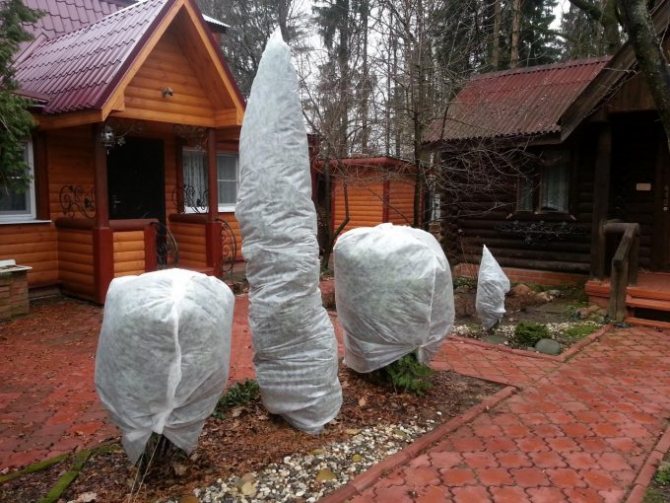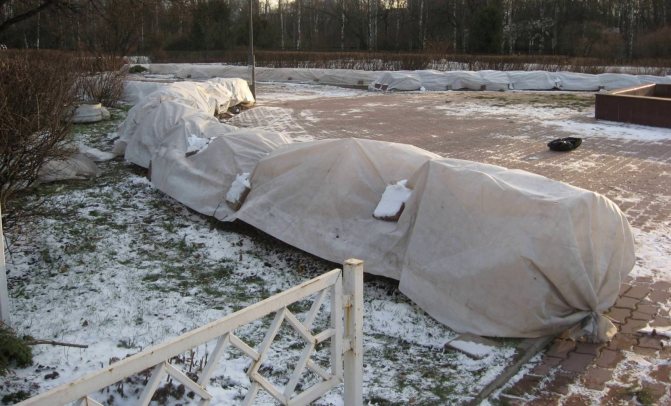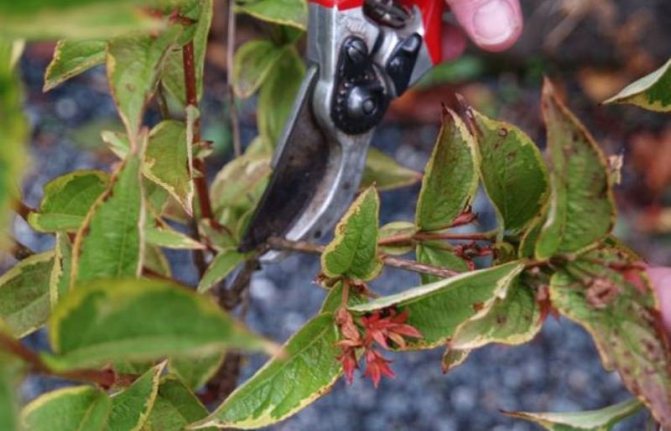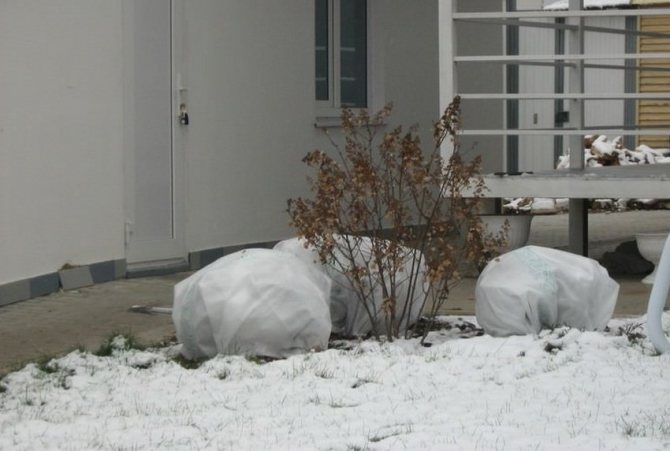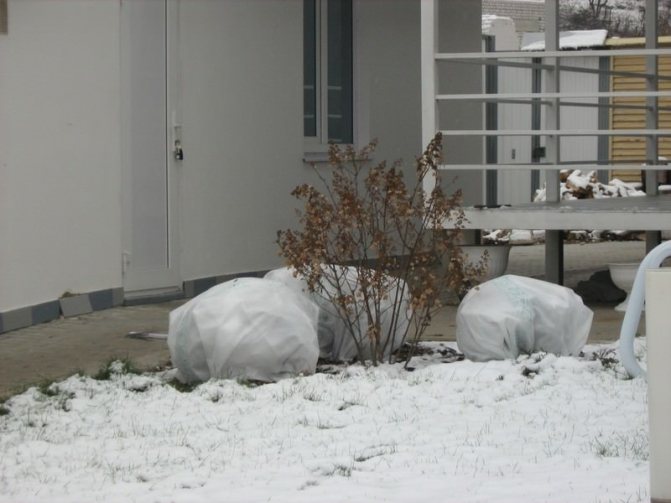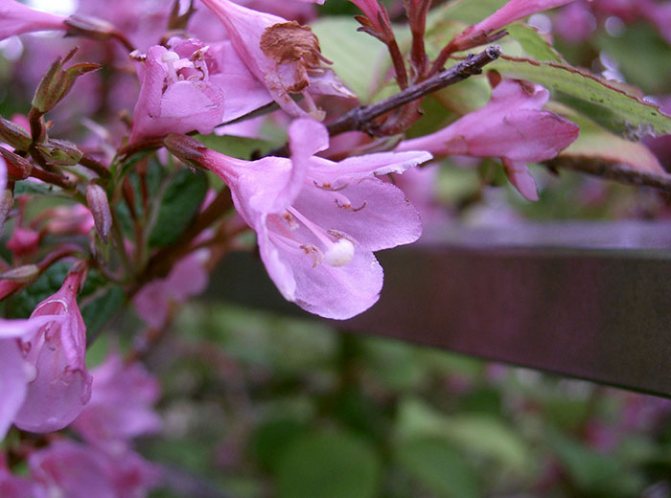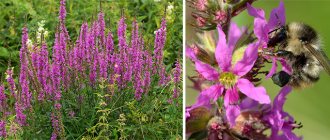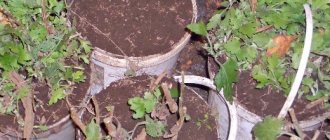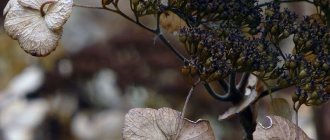All summer, weigela pleases gardeners not only with beautiful foliage and reddish twigs, but also with abundant flowering. With the arrival of autumn, many people have a question whether it is necessary to cover the weigela for the winter. It's one thing if the bush is young and it's not problematic to build a defense for it. But what to do with mature, spreading shrubs? For such a scale, it will already be necessary to build whole structures, but is it really necessary? Let's figure it out.
Frost-resistant varieties of weigela
The height of the weigela bush in the middle lane reaches one and a half meters. It mainly depends on the type of plant. In total, there are one and a half dozen varieties of weigela, which are also divided into varieties. Not all types of shrubs have taken root well in the middle lane. The following varieties are considered the most frost-resistant.
Fresh articles for gardeners, gardeners and florists
Pruning cherries in autumn for beginners in pictures step by step
What to plant after tomatoes next year
What to plant after strawberries in autumn
Planting garlic in autumn before winter in Siberia
- Weigel Middendorf. A plant of incredible beauty, belonging to the honeysuckle family, allows you to bring bright notes to the garden and diversify it. That is why the shrub is called the pearl of the beginning and middle of summer. Planting and caring for the Middendorf Weigela will not cause problems even for a novice gardener. Charming creamy, juicy yellow, captivating copper - this is how the inflorescences of this unusual shrub look. A curious fact - flowers are gaining color gradually: over time, almost snow-white petals acquire a rich color. The shape of the flowers is also unusual - they are bell-tubular. It should be said that Middendorf is the most staunch representative of the whole family! And the height of the Weigela Middendorf reaches 1.5 meters!
- Weigel Maksimovich. A beautifully flowering deciduous shrub up to 1.5 m high with a spreading crown. Leaves are green, pubescent, oblong-ovate or ovate, whole, simple, pointed at the apex, sessile, up to 8 cm long.The flowers are medium-sized, pale yellow, funnel-bell-shaped, up to 3.5 cm long, formed on short shoots in a small quantity. The fruit is a nondescript box containing winged seeds. Weigela Maksimovich blooms in the third decade of May - early June for 2-3 weeks, depending on climatic conditions and care. The fruits ripen in October, but in central Russia this happens extremely rarely. The foliage in the autumn changes color to ocher shades. In winter, shrubs leave with leaves, which provide additional protection from frost. This property plays an important role for plants, because weigela Maksimovich does not differ in increased frost resistance.
- Abundantly flowering weigela. It originates from the mountainous regions of Japan and grows to a height of three meters. Leaves are oblong, large, pubescent below and on petioles. The three-centimeter flowers are dark red at first, then brighten, they are also pubescent. The shrub grows quickly, needs moisture and fertile soil. Due to the height of the curved and beautifully flowering branches, it looks spectacular next to trees and at the borders of paths.
- Garden weigela. A short shrub native to Japanese forests.The leaves are large, sit on short legs. Flowers are tricolor, numerous, tubular-bell-shaped. The first wave of flowering occurs at the end of May, and the second in July. The color of the leaves in October changes, but the plant does not always have time to drop them before the cold weather. The frost and drought resistance of the plant is more pronounced in mature specimens. Loves bright sun, grows singly or in small groups. There are varieties with white flowers.
Reviews of our readers about wintering
Anna, middle band: “I make a hut over a young bush (before the frost sets in, I drive three sticks around the bush and tie it at the top). Then I cover it with insulation inside and pour dry leaves into the middle. On top of the insulation I wrap the hut with a film, and fix it with wire, and below it with stones. After the snow falls, I throw it as much as possible to the weigel. "
Marina, Chelyabinsk (Ural): “We often have winters with little snow, rather warm, but with occasional sharp drops in temperature down to -30 ºС for 7-8 days. I put two arches just above the height of the bush and cover with dense spunbond (60 g / m²), I also do with forsythia and roses. I also wrap young bushes with agrotextile, but bend them down and pin them with hooks, and cover them with a film on top and press them down with bricks along the edges. "
Elena, Chekhovsky district, Moscow region: “Weigela grew up in an open place and hibernated without shelter, only mulched and that's it, it didn't freeze, but it didn't bloom for about 3-4 years. Then I planted it in front of the house on the south side and did not cover it either, but the bush began to bloom profusely. "
Top dressing of weigela in autumn
An adequate supply of nutrients will allow you to survive the long cold winter. To fertilize shrubs before winter, it is best to use purchased or self-prepared dressings with a high potassium content. To prepare fertilizer at home, mix 4 kg. rotted manure or compost, 50 g of superphosphate, 30 g of potassium sulfate (this amount is enough to enrich 1 sq. m. of plantings). You can also feed the shrub with wood ash: 1 sq. M. add 200 g of powder.
What to do if it is withered or dry
It happens that in the spring the aboveground part of the weigela bush turns out to be dry. In this case, the gardener assumes that his plant is withered or frozen. There are a number of possible causes for shrinkage, and before taking any action, you need to determine which of these causes your plant.
There are two main reasons for winter drying out:
- damage to the roots;
- lack of water.
The roots of plants draw water from the ground and feed the aboveground parts of the shrub with it. If the roots are damaged, the flow of water to the leaves is reduced. This can cause the branches to dry out.
In winter, the roots may suffer:
- from lack of moisture in the soil;
- from frostbite;
- from physical injury, being pushed to the surface by cycles of frost-thaw and re-compressed by frozen soil.

How to determine the cause of shrinkage
Weigela bushes that have badly endured the winter can often be rehabilitated, they just need time to recover. To determine how to help the plant, carefully examine the shrub and soil underneath.
If root damage is suspected, look for a possible injury site. If the roots are not injured, you need to carefully try the ground for hardness with a shovel. If the soil is dry deeper than 5-10 cm, the weigela shrub needs water.
Possible causes of root damage:
- Root damage can be done by treating the root zone with an iron tool (too deep or close to the plant). For example, some gardeners like to dig soil around the plant in the fall to remove weeds, and accidentally damage the roots in the process. This problem can be avoided by regularly mulching the trunk circle.
It will be useful for you to read about what soil mulching is for.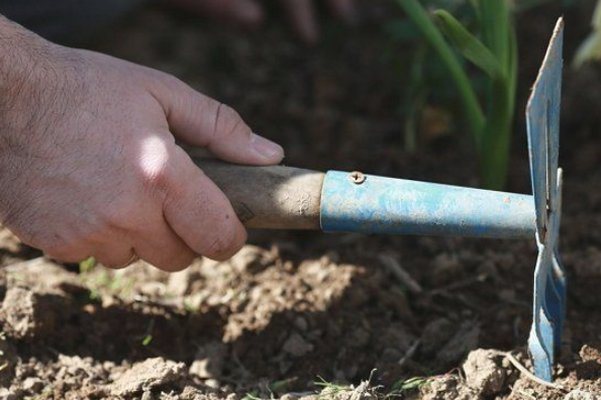

- Other diligent gardeners damage the root system when working with pre-winter composting or manure in the soil under the bush. To avoid this, instead of embedding fertilizer, it is necessary to carry out liquid fertilizing with compost or manure solutions. Such top dressing does not require digging up the soil.
- Finally, oversaturation with water or fertilizers can also damage plant roots. The root system rots, loses its ability to absorb water. Additional watering in this case can be like throwing wood into the fire.
What to do
- If the soil under the plant is dry, which was facilitated by the winter with little snow, then water the shrub well, but do not overmoisten it. At a time, you need to add no more than 5 liters of water, and repeat watering (in dry weather) twice a week for a month.
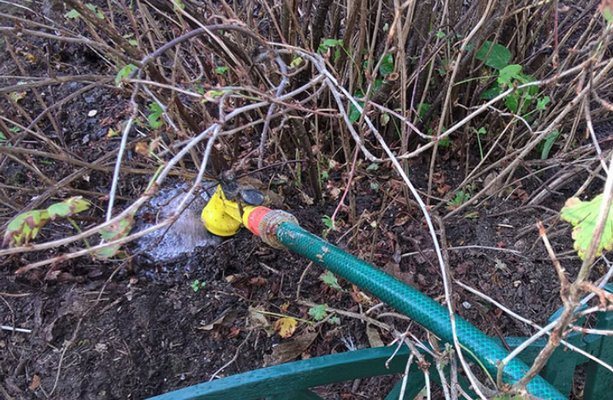

- If the roots of the plant have been damaged (regardless of the source of damage), they need to be given time to recover. It is better not to water the damaged root system at all, but to cover the near-trunk circle with mulch to retain the remaining moisture in the soil.
- With good care, the affected weigela shrub will recover in about a month, and may even discard flowers in the same spring.
Important! Water supply to the root system when the roots are unable to absorb water, at best
- a useless action, at worst - the reason for the beginning of root decay.
Timing of pruning weigela in the fall
Weigela is considered extremely resistant to molding, the bush can be cut in spring, summer and autumn. Pruning at any time of the year, except for winter, will not harm the plant, but will lead to the formation of new shoots. Pruning in early spring is more convenient, since in summer, due to the abundance of green mass, it is difficult to see which branches should be removed. In the spring, the haircut is carried out from the moment the kidneys swell. Autumn work is convenient to carry out after flowering or leaf fall. A similar rule applies when pruning a chubushnik. Usually it is this plant that is used as a companion on the site. It is actively growing, at the height of the season it is covered with snow-white flowers, many varieties of mock-orange are fragrant and frost-resistant.
Since weigela blooms on the shoots of last year, only a sanitary haircut is organized in October or November.
To know exactly when to prune weigels and how, you need to find out the age of the shrub and varietal characteristics. Dwarf varieties are not greatly shortened due to their small size. It is enough to remove too elongated and broken shoots. Tall varieties are pruned more often and shorter. In the Moscow region, work is carried out in mid-April and October.
Briefly about the bush
Weigela has large flowers that can grow both singly and in collected inflorescences. Flowers hide in leaf axils and young shoots. The flowers do not smell, but they look pretty and attractive.
Weigela can be white, pink, pale cream, bright red, purple or scarlet. The color of flowers changes in the process of flowering and withering. Therefore, at the beginning of flowering, bushes can bloom in some shades, and towards the end of flowering, in completely different ones.
Some shrub varieties have unusual leaves. They have cream edging on a green velvety background. In autumn, the crown acquires a crimson burgundy or bright purple color. Weigela grows to a height of two meters. The shrub blooms twice a year with large bright flowers: in May and September. Ate to create favorable conditions for growth and reproduction for the shrub, it can live for about 30 years, every year, blooming with its beautiful flowers.
Pruning weigela in autumn
In the fall, treat the near-stem part and all the soil under the crown with fungicides so that fungal diseases do not occur. Trim off dead buds, remove growths pointing inward or downward.Over the summer, the shrub releases many shoots, not all of them can develop well. Weak branches will draw forces from the plant, but there will be no sense from them. Such fragments need to be removed. See if the crown is too thick. Excess shoots will interfere with lighting and ventilation of strong shoots. Even if all the branches are healthy and strong, but there are too many of them, leave the strongest young shoots, and cut the rest mercilessly.
Plant care rules
Caring for weigela bushes is as follows:
- Perform a systematic sanitary pruning every spring. This procedure will give the shrub a decorative, well-groomed look. It is necessary to remove dried, broken, diseased and frostbitten twigs from the bush.
- So that new shoots with flowers appear in the place of withering flowers, shorten the corresponding branches.
- In order not to harm the flower buds of the next season, do not cut the weigela in the fall.
- In order to give the bush a decorative look, it is recommended to cut it off during or after flowering.
- With the active development of shoots, it is important to fertilize the bushes with nitrogen fertilizers. They are added to the water, which is irrigated every two weeks, all plants.
- During budding, the bushes are fed with superphosphates, which are added a tablespoon to a bucket of organic solution.
- After watering and feeding, the soil around the bushes must be plowed.
- Young plants that have not yet reached a height of one and a half meters must be protected from cold weather in the winter season. To do this, cover the rhizomes and plants with leaves, straw or special shelters before wintering.
If you cut off a blooming weigela twig, it will stand in the vase for a very long time. To decorate the garden, you can use different varieties of weigela, planting them in different parts of the territory.
Protection of weigela in the fall from pests
In winter, weigela does not suffer from an invasion of beetles, but rodents will willingly eat this plant. In winter, hares and mice often wander into the site in search of food. They gnaw through branches and bark to get to the very core. After such visits, the chance of plants to survive the winter and bounce back with the arrival of spring is practically zero.
Fresh articles for gardeners, gardeners and florists
Pruning grapes in autumn for beginners in pictures step by step
Preparing clematis for winter in the Moscow region
Begonia ampelous care at home in winter
Pruning Blackberries in Fall for Beginners
Thus, the preparation of the weigela also implies protection from rodents. For these purposes, special mesh barriers are installed around the bushes. Another option is to wrap the plant in burlap so that the pests cannot reach it.
Some people advise using special repellents that treat the bushes. Your specialist store will tell you which repellents work best and how to apply them correctly. For greater efficiency, it is recommended to process the weigela more than once, but to do several sprays during the season.
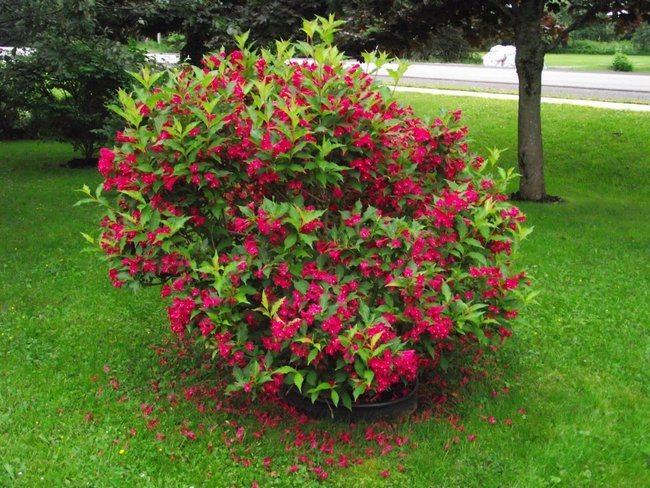

Shelter types for the winter
When the freezing temperature is constant outside, you can start warming the bush. Of course, the weigela shelter for the winter is necessary, but it is also not worth insulating it too early. Light frost for hardening is useful for the plant. In addition to the standard procedure for sheltering the shrub from low temperatures, the weigela is covered to protect against sunburn.
Important! It is necessary to equip a shelter for a weigela in dry weather, when the top layer of the soil slightly freezes.
From sunburn
Not only severe frost can damage the plant, but the bright rays of the winter sun can injure the unprotected bark of the trunk.... Often, sharp temperature fluctuations end in sunburn for the weigela.A plant heated by the winter sun begins an active circulation of juices in the stem. If during this process there is a sharp cooling of the air, the wood tissue will be damaged. The bark will dry out, and visually cracks and other damage will be observed on it.
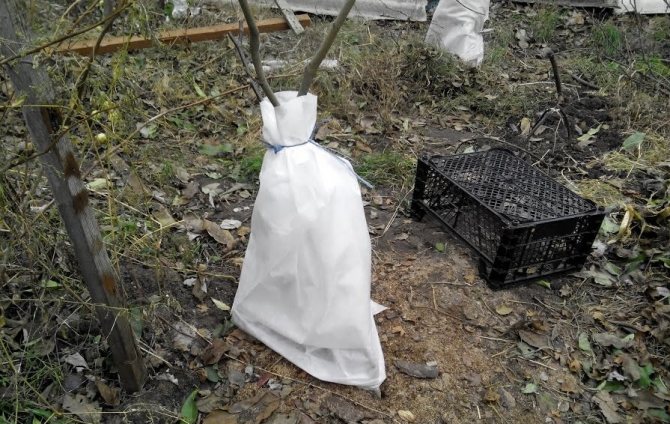

You can prevent sunburn by wrapping branches with agrofibre, a breathable material like spunbond or agrotex. When no insulation material is used, it is necessary to provide the shrub with a shade from the bright sun.
Preparing weigela for winter
Preparing for winter is a whole range of measures, which includes arranging a high-quality and reliable shelter that will prevent the plant from freezing. After all the foliage has completely fallen from the ornamental shrub, and this situation is observed in the last decade of October or at the very beginning of November, it is required to provide the plant with high-quality and reliable protection from the approaching frost. For this purpose, experienced florists recommend using ordinary soil. It is necessary to sprinkle the near-trunk circles of shrubs with earth, with the formation of a soil mound about a quarter of a meter high.
Weigela breeding methods
Weigela propagation is carried out using seeds, cuttings, shoots or shoots. Experienced growers know which variety can be propagated by seed and which is best propagated by cuttings.
Seed reproduction
In April or May, you can carry out seed propagation of the plant. Prepare your garden soil by mixing it with peat. Place prepared soil in spacious boxes and moisten it well. Sow the seeds and cover the boxes with foil to maintain the correct temperature for the first shoots to hatch. As soon as leaves appear on the sprouts, the film can be removed. The first seedlings can be seen 14 days after sowing seeds in the ground. A month after that, they can be transplanted into open ground. After the appearance of the first leaves and just before planting in the ground, it is imperative to pick young bushes. Dig up young bushes in the first autumn before the onset of the first frost and plant in a cool, ventilated room. Hide the rhizomes in burlap, which must be systematically moistened. The following spring, the plants are planted in open ground.
What is important to know about the autumn planting of weigela
An ornamental shrub planted in spring, in the period from warming up the soil to swelling of the buds, takes root best of all. Seedlings planted in autumn most often die in the first winter, which is due to the botanical characteristics of the thermophilic ornamental plant. For landing, you need to choose a place on a hillprotected from the north cold wind and strong drafts that cause shedding of flowers and buds.
Ideal for planting and growing on the south side of the house with good sunlight. To obtain abundant and long-term flowering, the soil on the site must be loose and rich in humus. Preference should be given to sandy loam or loamy soils with a slightly alkaline or neutral reaction. Important to remember, that only plants at least three to four years old are suitable for planting.


Before planting seedlings, it is required to lay high-quality drainage in the pre-prepared planting holes. Optimal for planting are pits with dimensions of 50x50 cm and a depth of about 35-40 cm deep. A brick fight or gravel 15 cm high is laid at the bottom. To fill the holes, garden soil is used with the addition of 40 g of potassium salt and 60 g of superphosphate. The trunks of the planted plants are mulched with crushed bark or sawdust. The ornamental culture planted in this way quickly takes root and pleases with abundant flowering.
When is it better to trim ornamental bushes?
Weigelu can be compared to lilacs in terms of endurance to pruning shoots. You can cut it in spring, summer and autumn - the bush will not get sick and will not die, it will only release new shoots. The timing of the haircut is mainly chosen for the convenience of the grower. In summer, the plants are covered with dense foliage, among the greenery it is very difficult to determine which shoots should be removed or shortened. It is better to do this work in early spring, before the buds have blossomed, or in the fall, after leaf fall.
In early spring, look at your bushes and you may notice the black tips of some of the twigs. This happens when the shoots freeze slightly in a cold winter. Wait for the buds to begin to swell and cut off any damaged areas 1 cm above the extreme living bud. If such a sanitary haircut seems too tiring for you, in the fall, do not delay the pruning until the very cold, trim the bushes 20 days before the onset of frost. In 3 weeks, the branches will get stronger and winter well.
The bushes will thrive if you trim them twice a season. After wintering, branches frozen or broken from snow will remain on the weigel. If not removed, the damaged fragments will rot and become a source of infection for the entire bush. Over the summer, some processes will get sick, and pests will settle on some. It is undesirable to send the plant for wintering in this state, it is better to carry out a sanitary haircut some time before frost, let the green pet heal the wounds and send it to winter rest in a healthy state, free from infections and parasites.


Optimal timing
Since weigela is a rather unpretentious plant (and for this it is compared to a lilac bush), the culture can be cut in any period: in spring, summer and autumn, at a time convenient for you, excluding only the winter months. Even during flowering, it is impossible to harm the weigel by pruning, since the shrub easily reacts to this, releasing more and more young shoots.
There are several types of haircuts:


As a rule, pruning is done after flowering. And for the formation of the shape of a bush, summer and autumn are more suitable. Sanitary pruning is done in early spring, removing all rotten and frozen branches after wintering. It is easy to identify them: a sign of freezing of the branches is the blackening of the tips.
In the spring, it is very convenient to prune the plant, because this is done even before the leaves bloom, which gives a good overview of all the shoots. It is easy to figure out which branches have already become obsolete, and which have living buds. The rejuvenation procedure is performed in the spring or autumn before wintering, after the foliage has fallen off. This will allow the stumps to have time to strengthen and gain strength, so that upon awakening after winter, they will grow again with dense and numerous shoots.
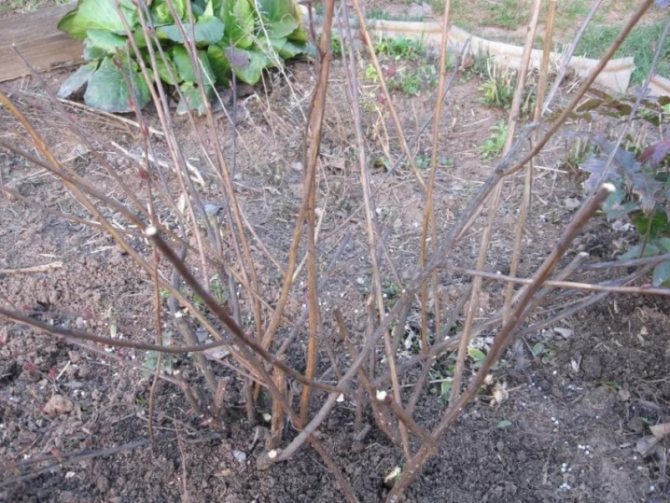

Comments (1)
Write a comment
- Landscape Elements of landscape design Do-it-yourself planters
- Rockery construction
- Garden paths
- Lighting and illumination
- Garden sculpture
- Dry stream
- Alpine slide
- Beds and flower beds
- Flower pots
- Garden figures
- Hedges
- Lawn in the country
- Drainage of the site
- Decorative waterfall
- Playground
- dacha bakery
- Plant varieties Flowers Rosary
- Exhibitions and events
- Feedback
Many gardeners in Russia prefer to plant deciduous ornamental shrubs in their summer cottages, bringing a zest to the entire appearance - this is weigela... Planting and caring for the presented shrub does not require special physical costs and time.
However, like any plant, this decorative beauty should also be looked after according to the rules, which should be carefully considered and determined for yourself, and whether you can cope with the task at hand.
The use of weigela in landscape design
Weigela is interesting for both the gorgeous flowering and the attractiveness of the foliage of certain varieties. The joint planting of weigela and spirea is considered a traditional duet, at the same time blooming. An excellent combination is obtained with lilacs: there is a large field for creativity and the creation of exclusive landscape compositions. Quite often, hydrangeas are planted in the company with her, which bloom later. For an interesting design of flower beds, euonymus, barberry, tall ornamental grasses and cereals (various types of miscanthus, sedge, pampas grasses) are added to the weigel.


If the size of the site allows, then the group planting looks great: 3 - 5 weigela shrubs of different or identical varieties (species). Mixborders with the participation of weigela and herbaceous flowering plants (slightly bright if their flowering occurs simultaneously with the weigela), for example, poppies, ornamental bows, also look organic, you can try cinquefoil and soapwort. In color, it goes well with yellow-leaved plants, for example, cypress and with coniferous evergreen shrubs, for example, with a juniper, which has bluish-gray foliage, or with thuja. Weigela is also used for hedges, but it looks best alone in the central places of the site, near the porch or the main staircase.
loading ...
General Tips
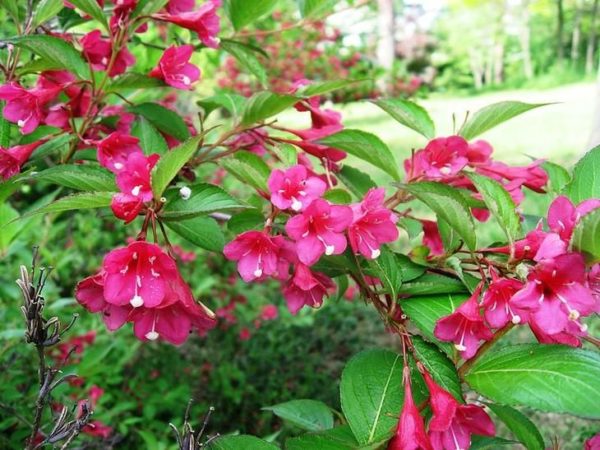

It is not difficult to grow this plant in the garden. To prepare the weigela for winter, caring for her in the fall consists of performing the following mandatory measures:
- glaze;
- application of fertilizers with a high concentration of potassium;
- mulching the periosteal circle;
- formative pruning;
- warming in the fall in a frame or frameless way.
How weigela winters
Weigela's departure for the winter is characterized by the cessation of sap flow and immersion in a state of rest. Depending on the variety of weigela and the winter hardiness zone in which it grows, plants overwinter with or without insulation. Heat-loving varieties cultivated in the south practically do not need additional insulation measures. Also frost-resistant varieties do not cover in conditions of moderately frosty winters. Heat-loving varieties in the northern regions must be covered.
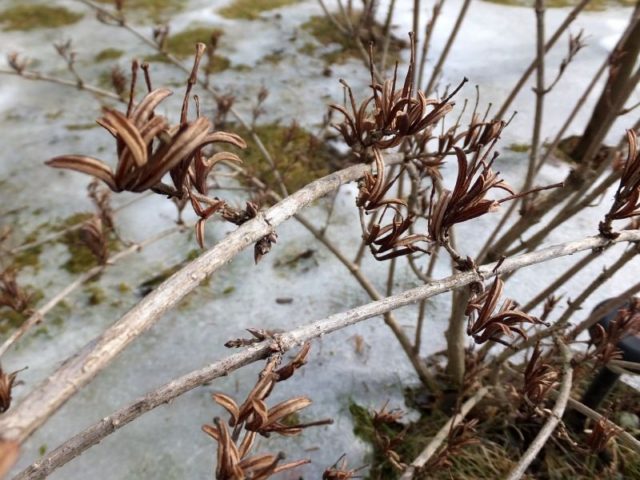

Diseases and pests
Most often, the weigela is affected by aphids and leaf-eating caterpillars, and in extreme heat - spider mites and thrips, but usually by the time the heat sets in, the first flowering of the weigela is already coming to an end. For pest control, rogor, nitrafen, celtan are used - pesticides that harm the environment. To avoid this, it is better to use insecticidal plant infusions, for example, from wormwood, hot pepper or garlic, in order to destroy pests. If the seedlings begin to turn yellow and wither after planting, it is quite possible that their root system was affected by the larvae of the May beetle or bear, which could have been brought into the planting pit with humus or compost. In this case, spill the soil with a solution of karbofos or actara.
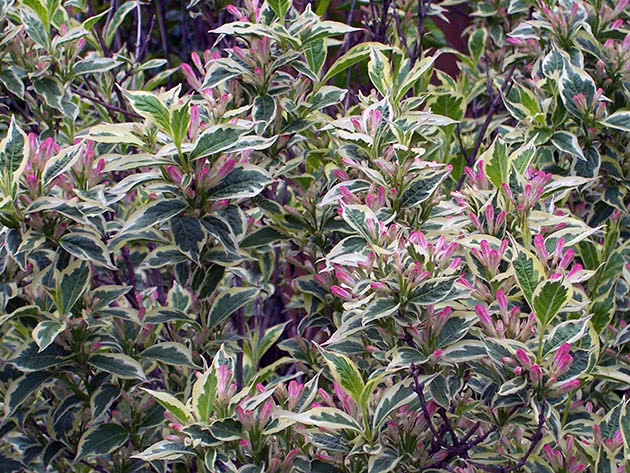

Of the diseases, rust, gray rot and spotting are dangerous for weigela. To combat bacterial and fungal diseases, treatment with Bordeaux liquid is used - milk of lime with copper sulfate.In order to prevent diseases, it is advisable to process weigela during the period of leaf appearance with a three percent Topsin solution.
Why does not weigela bloom?
There are several reasons why decorative weigela may not bloom. Initially, it should be said that the flowering of the plant may not occur due to improper planting of the shrub. If the weigela is in the shade, then in addition to weak or completely absent flowering, the gardener will face the problem of woody shoots and delayed seed ripening.
Also, the absence of flowers on a shrub may be the result of a banal lack of moisture or nutrients.
In this case, special attention should be paid to the root system, because many beetles will not deny themselves the pleasure of eating weigela roots.
Features of growing weigela early
This type of deciduous shrub prefers to grow in a well-lit area, protected from drafts. A site with loose soil is chosen for planting. If the land does not meet the required characteristics, additional sand and humus are added.
A pit for a weigela is dug with sides of 50 cm.Then a bush is placed in it and buried. After that, the soil is compacted and the plant is well watered. When planting, the plants are placed so that their branches do not touch.
Preparation for wintering
Caring for a weigela in autumn to prepare for winter consists in warming with spruce branches. It is laid out in the periosteal circle, capturing the lower part of the trunk. Instead of spruce branches, peat or sawdust is used. Then the bush is tied tightly and a wire frame is installed over it. It is covered with agrofibre, lutrasil or other covering material.
Care features
Weigela is watered regularly in summer. In a sultry and hot summer, the bush is irrigated every day using 5-8 buckets of water. To reduce moisture loss, the soil is regularly loosened and mulched with a suitable material. This procedure is also helpful in reducing weeds. The mulching layer is laid with a thickness of 4-6 cm.
In spring and summer, weigelu is fed with mineral complexes containing all the substances the plant needs. In August, fertilization is stopped so that the shoots have time to woody and prepare for winter. After the snow melts, weigelu is fed with phosphorus-potassium fertilizers or organic matter.
Reproduction
Weigela early is propagated mainly by cuttings. To do this, cut cuttings up to 12 cm long with two living buds. Slices are made straight.
Rooting of cuttings is performed in this order:
- The lower cut of the cutting is treated with a growth stimulant.
- Leave the prepared planting material in a darkened room for 12 hours.
- The cuttings are placed in a peat-sand mixture for rooting to a depth of 0.5 cm.
- Cover the shoots with sand and cover the container with film or glass to create a greenhouse effect.
- Roots appear 40 days after planting.
- After that, young seedlings are grown for a year and a half before planting in a permanent place.
Another way of reproduction of weigela is seed. The seeds are planted superficially in wooden boxes filled with fertile soil. Sprinkle them with sand on top and cover the container with film or glass. The first shoots appear in 3 weeks.
Weigela indoor bush: plant description


Is a perennial shrub with erect shoots. Does not form stolons. Green with white edging, velvety leaves are opposite, they do not have stipules.
The plant is prone to re-flowering, and the flowers are quite large (up to 5 cm), funnel-shaped. They can be collected in inflorescences (up to 6 pcs.) Or single. The color is different: from white to pink.
A characteristic of weigela is the change in shade during the flowering process from paler to brighter. The fruit is a bivalve capsule with angular small seeds. In some varieties, they are winged.Weigela lives to be 20-30 years old.
How to prune a shrub correctly?
Let us consider in detail how to form, update and heal a bush with a haircut.
Weigela is divided into 3 types by size:
In dwarf varieties, the height reaches only half a meter, medium varieties grow up to one and a half meters, and high ones - up to two or a little more. Of course, dwarf weigels should not be cut very shortly, and they only need sanitary pruning, which consists in removing diseased, damaged and weak branches. And also after a lapse of time, when the bush becomes old and stops blooming magnificently, you can rejuvenate it.
Medium and tall plants, on the other hand, need a more thorough and frequent haircut. The pruning procedure is very simple even for novice gardeners and will not be difficult. It is necessary to start forming a bush after 2-3 weeks after planting.
To give it the shape of a ball, it is necessary from below, near the trunk, to shorten the branches by a third of the total length, then gradually cut them off, leaving the tips longer and longer, and so on, until you get to the middle. From the middle, the procedure is repeated, only in the reverse order. And so on in a circle to achieve a spherical shape.
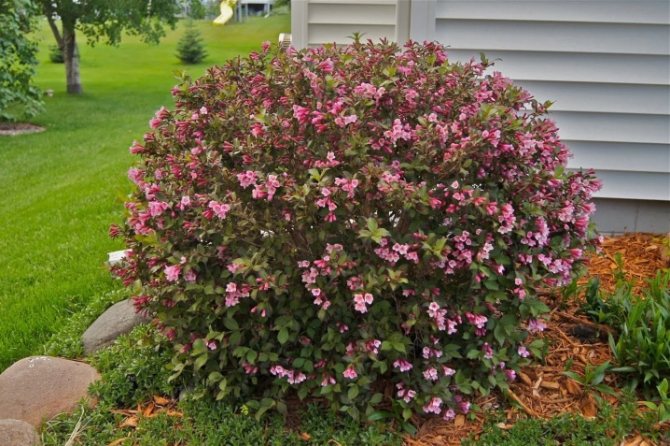

Weigela can be easily transformed into other geometric shapes. Triangles, cubes, spirals, waves and even animal shapes. To form the shape of an animal, it will be better and easier to build a kind of wire frame, and let the plant grow in it. Then it will be enough just to cut the branches in shape. It only takes imagination and certain skills, but if you wish, everything will work out.
Do not be afraid to spoil the bush - the branches grow quite quickly, and it is easy to fix the mistakes of the previous haircut. There is also the corresponding literature, where the pruning schemes for various plants are indicated.
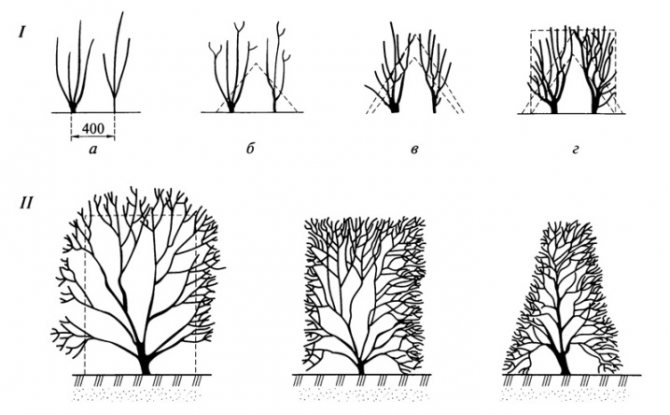

If you want to give the shrub the shape of a tree, then choose one of the smoothest and most beautiful shoot, and remove the rest. This will be your future trunk. You can also form a trunk from several shoots. They can be twisted around each other or braided, thus giving an unusual shape. In any case, you first need to grow a stem, and then start forming a crown on it.
For sanitary cutting, as well as for the recovery and renewal of the shrub, it is necessary to cut off the shoots above the bud, leaving from 0.5 to 1 cm of the trunk on top. Throughout the season, it is necessary to thin out the plant from time to time for free air circulation, good lighting and the appearance of new shoots.


Just do not overdo it, since the shrub blooms in the second year of its life and if you remove a lot of last year's shoots, then do not expect lush flowering. And in order for weigela to please you with repeated flowering, it is necessary to remove all faded inflorescences, cutting off part of the tops of the branches by 2-3 cm.
To rejuvenate the plant, after reaching 3 years of age, it is necessary to cut off all the trunks completely, leaving hemp about 10 cm high. Places of cuts should be immediately treated with garden varnish or any fungicide, it will not be superfluous to process the soil around the bush with it. You can cut off the entire plant, along with the young, or you can only shorten the old branches. New shoots will subsequently go from them.
How to prune in spring, summer, after flowering?
There are 3 types of trimming:
Planned sanitary pruning is carried out in the fall or spring on young bushes. All frozen, damaged branches are removed with pruning shears. Can young shoots be cut? Yes, if they thicken too much and shade the bush. To carry out a sanitary spring pruning, you need to inspect the branches, find those with slightly blackened tips. This is due to freezing during the winter.
Weigel rules for sanitary spring and autumn haircuts:
- Cut off the stems from the moment the buds swell.
- The shoot is cut so that 1 cm remains from the extreme living bud.
- Branches with spots, mechanical damage are subject to removal.
- A sanitary haircut can be carried out in the fall, but before the onset of cold weather, otherwise the plant will not have time to adapt and will suffer greatly in winter. To make the branches stronger, they are pruned 3 weeks before the onset of the first frost.


Adult Weigels need a shaping cut to get the desired shape. In the first years of life, it is enough to take care of the successful growth of the seedling, and then proceed to molding pruning, transforming the crown into a ball, pyramid or cube.
Formative pruning of adult weigels is carried out in the summer before the start of the second wave of flowering.
Shoots are cut by 1/3. The more young stems have grown, the more abundant re-flowering will be. After cutting, the shrub is fertilized with complex preparations, potassium sulfate, or the trunk circle is mulched with humus. It is not forbidden to use a liquid mullein before a new wave of flowering (proportion 1:10).
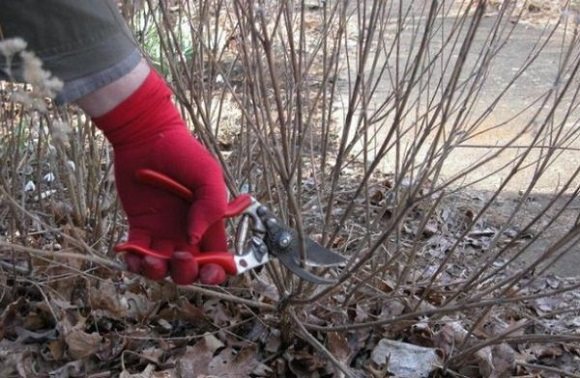

To rejuvenate the plant, you will have to cut the stems older than 3 years into a stump. They form buds only at the tops, so they need to be replaced periodically in order to enjoy the abundant flowering of the shrub every year. Cutting points need to be treated with garden varnish.
The decorative aspect of the plant
By itself, weigela is selective, due to the fact that it is mainly resorted to when the creation of unprecedented landscape compositions is required.


Weigela nana variegata is intended for this very purpose. Experienced owners have repeatedly received, on the basis of selection, another option with a more balanced level of ornamental shrub that needs a haircut.
Timely cutting of the weigela allows you to build up a dense crown. Next, you just need to choose strong shoots, and apply your own artistic imagination. If desired, both a high hedge and a small curb are made from weigela. Anything your heart desires. Plants, small in volume, are great for flower bed compositions, where they will have no equal in beauty. They stand out even among bright peonies or one and a half meter phlox bushes.
Popular: Growing, pruning 9 varieties of privet for a green hedge
Description
Weigela plant (Latin Weigela) belongs to the genus of shrubs of the Honeysuckle family. The plant was named after the German chemist, botanist and pharmacologist Christian Ehrenfried von Weigel. In nature, weigela flowers are common in the east and southeast of Asia, as well as on the island of Java and the Far East. The genus is numbered fifteen species, in culture, 7 species and about 10 highly decorative varieties of weigela are most often grown, which are deciduous shrubs and have such advantages as beauty and ease of reproduction and care.
Weigela - rules of care and cultivation (video)
Before planting and other manipulations with the weigela, it is worth finding out if it will take root in your area. In general, weigela is a bush from the genus of honeysuckle, which has a lush crown and flowers-bells of warm shades: carmine, pink, yellow and caramel. But is it possible to grow this luxurious, unpretentious shrub everywhere?
In the wild, weigela grows in the southeast of the countries of Eurasia, in the Far East of Russia and on the distant island of Java. Because of these distribution patterns, weigelu can be difficult to grow in cold regions. Weigela needs partial shade or light sunlight.
Flowers and fragile leaves are easily damaged by gusts of wind, so it is best to plant a bush so that it is protected by a house on one side. But the distance between the house or weigela and other bushes should exceed 150 centimeters.
Remember that weigela develops well in black soil and other fertile soil types and does not tolerate moisture. The depth of the fossa is at least 50 centimeters.At its bottom, immerse a layer of drainage 15 centimeters deep, and humus, river sand and a small proportion of drainage are suitable for drawing up a soil mixture.



